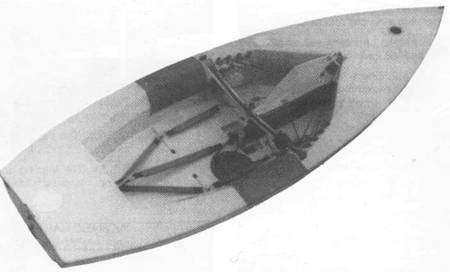 |
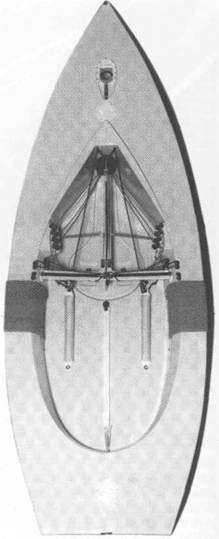 |
| An early Pata Finn |
Soft Decks?
Considering the success of Lasse Hjortnas, Wolfgang Gerz and Mark Neeleman in the mid 1980s, it is to be wondered whether one of the secrets of the winning boats might be a soft wornout deck and a good stiff old hull. Perhaps you have to sail a boat 3000 hours in heavy wind, before the deck is worn out to such a degree, that it provides the desired overall flexibility. It is known, that these three sailors used rather stiff masts in their rather flexible boats. |
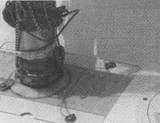 |
For the Olympics they had to adjust to stiff boats, since the Olympic Vanguards had tanks and double bottoms. In 1983 at the Gold Cup in Milwaukee there was a lot of talk and complaints, that the then new stiffer Vanguards were not as fast as the old softer ones with conventional floor boards. Hjortnas had his old boat flown over the ocean and Jorgen Lindhardtsen switched back to an old type, after testing the new type in Long Beach . |
Pata's solution to
the adjustable mast gate
|
The Lemieux Finn |
|
Carbon Masts
The trend to change the construction of the mast was initiated in the mid eighties. After various times of interest and disinterest, the go-ahead was finally given in 1992 and 1993 saw the first prototypes being used in serious competition. Within a very short while, they had outmoded the existing aluminium spars. Carbon masts were superior for several reasons. Firstly they could be built at a lower weight, removing both weight out of the bow and aloft. They have a faster rate of recovery characteristics which can allow carbon masts to point higher and have more power. Lastly, they enable the sailor to tailor a mast to suit his own weight and sailing style. Often, with metal masts, a sailor had to buy up 6-8 masts just to find one that was good for him. With carbon, the mast can be adjusted at much less cost to the sailor.
|
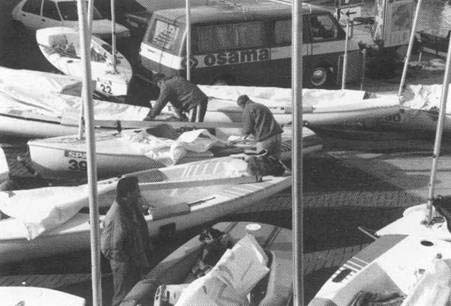 |
For the first few years when they had to carry extra weight to bring them up to the minimum weight of the existing aluminium masts. Carbon booms were discussed, but never implemented. Early on in the carbon mast development phase, many sailors would top their original metal mast with a carbon top section. This gave the mast a large percentage of the characteristics of a totally carbon mast, but they never really flourished, probably because with a totally carbon mast a much more even bend could be manufactured - the joins in metal masts always provided hard spots along the mast.
|
|
|
The Vanguard monopoly was effectively broken in 1993, when for the first time in many years there were four different boat builders in the top five at the Gold Cup. Philippe Presti sailed the then new Devoti Finn to its first Gold Cup win, Hans Spitzauer sailed the Pata Finn into 5th place whilst Richard Clarke sailed the new Lemieux Finn into 3rd. Since the introduction of these hulls, Vanguards are hardly ever seen at the front of an International fleet. |
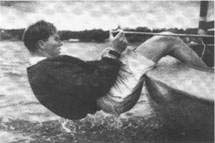 |
Plastic Sails
At the start of 1998, plastic sails started to gain rapid acceptance in Finns. It soon became apparent that these sails, made from a variety of materials (such as Kevlar, Mylar, monofilm, polyester), were superior to the standard Dacron sails which had been around for 29 years. The hard sails allowed far more power to be held by the sailor, so masts became slightly stiffer again.
|
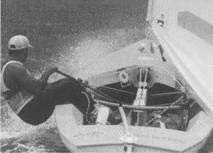 |
Finns Then and Now
Paul Elvstrom in the 1950s |
Finns Then and Now
Jose Maria van der Ploeg in 1996 |
|
The Future
What else might be the trend in the future of Finn development? One of the interests of IFA is to keep the price of the Finn lower, The best instrument to achieve this is to encourage competition, by allowing experiments with new materials, combinations, or designs. From 1952 up until 1996, the Finns at the Olympic Games were supplied by the organisers (as were rigs until 1972). Will the fact that competitors can now bring all their own equipment to the Olympics (including the hull) change the development process of the Finn? |
|